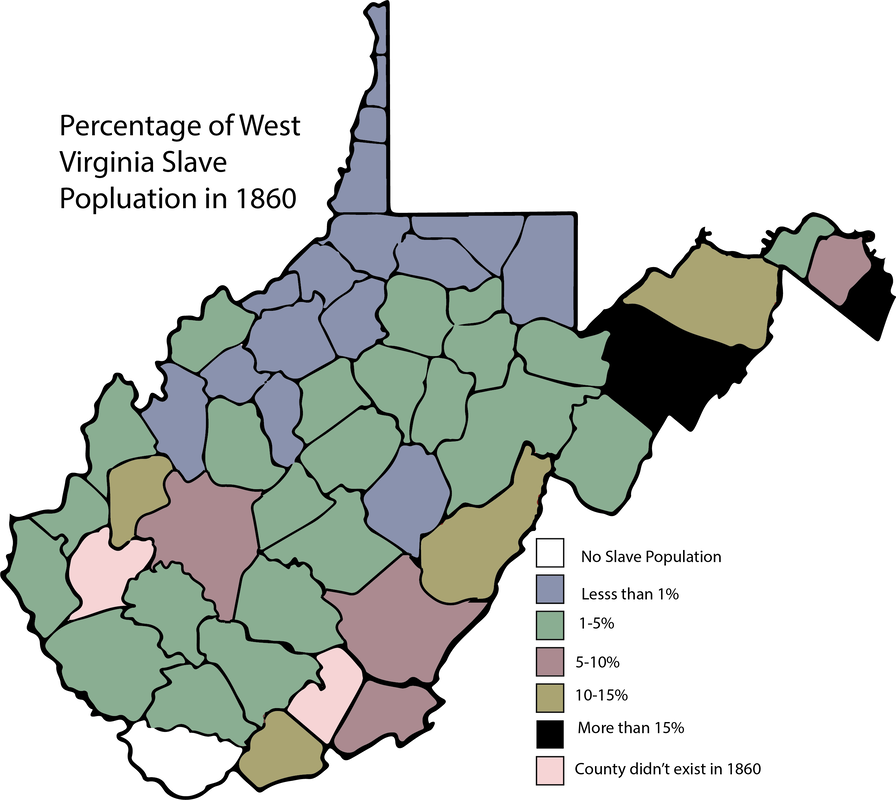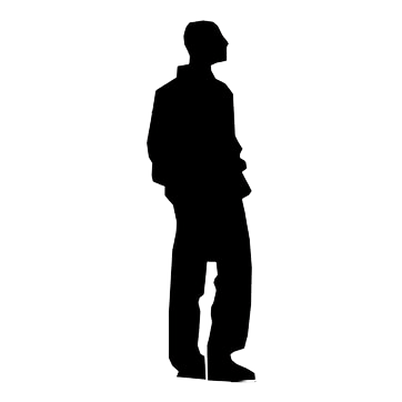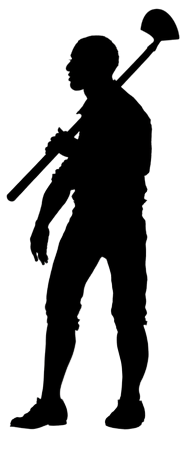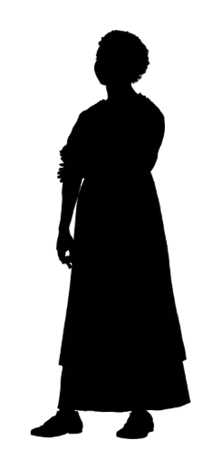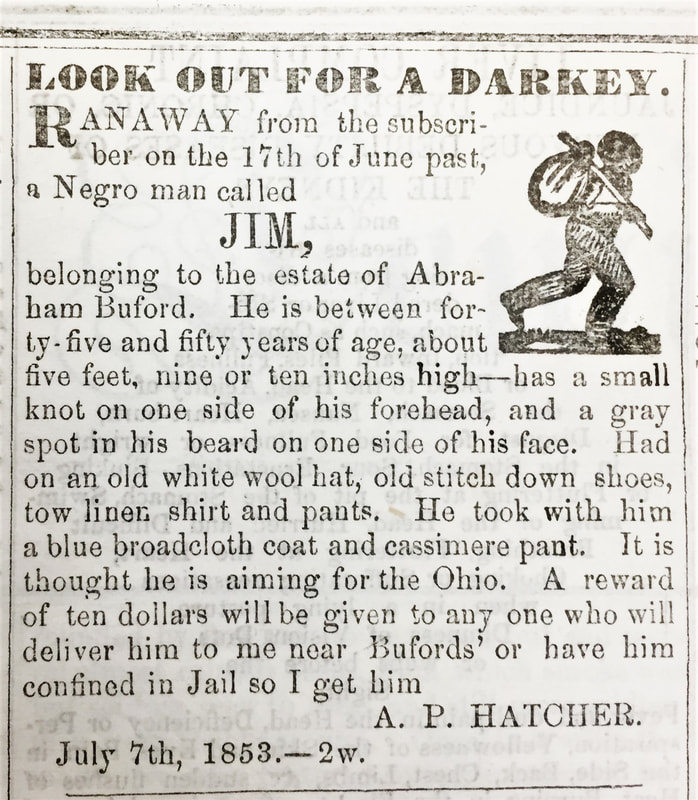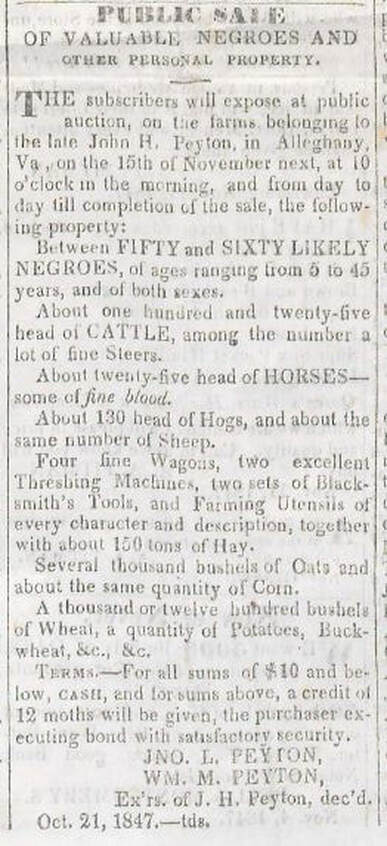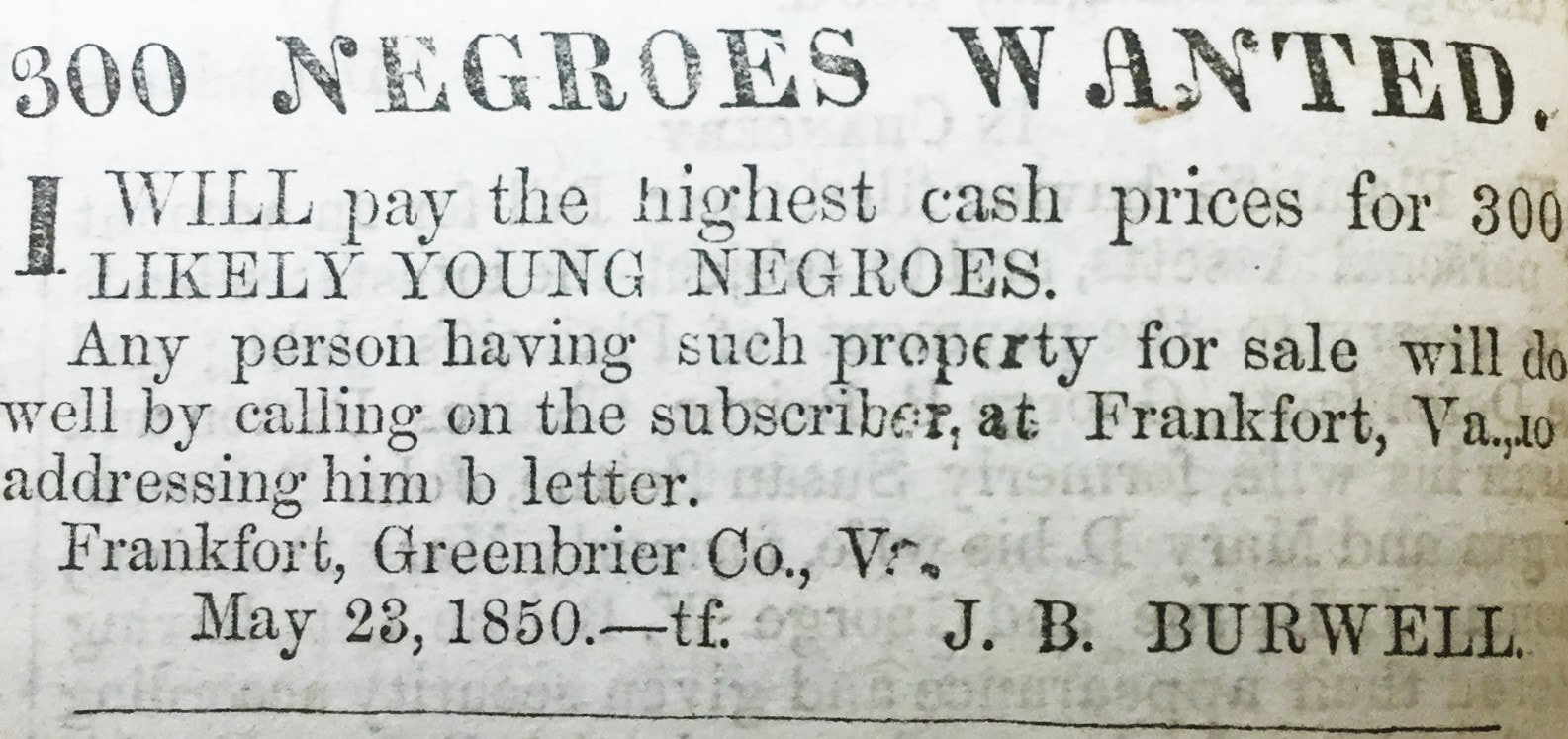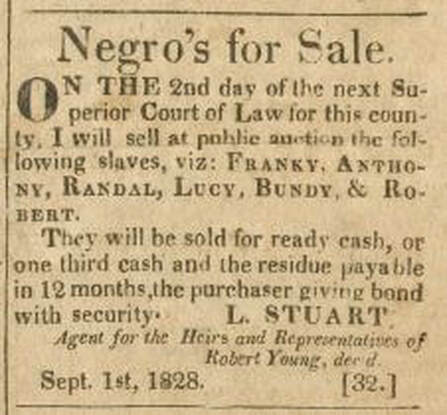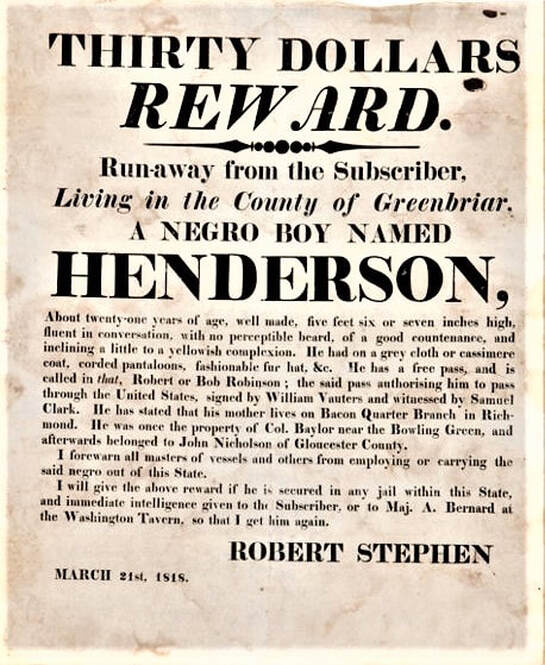|
Slavery was well established in Greenbrier County and the local economy was dependent on slave labor. Slave ownership varied with many households owning and enslaving fewer than five people to farms and plantations owning hundreds of enslaved people. Residents that didn’t enslave others were still dependent on the institution of slavery. Enslaved people did both unskilled and skilled labor from farming and brick making to working at the “Old White” and other spring resorts and hotels. Local slave owners punished enslaved people by selling them south as part of the intrastate slave trade that expanded after 1808 when the importation of new slaves was made illegal. Enslaved parents and children were separated when owners sold them or gave them to family members who left the household. Local newspapers contained notices of slaves for sale and rewards for runaways. On the eve of the Civil War, there were 1,525 enslaved people living in Greenbrier County.
|
“No matter how relaxed or less violent slavery might have been in certain parts of the state, the power dynamic of slavery and white supremacy was always present,” said Cicero Fain, College of Southern Maryland.
Testimonies of Slavery
“Near the first of January 1834…I met a drove of negroes, 30 or 40 in number, remarkably ragged and destitute of clothing. One little boy particularly excited my sympathy. He was some distance behind the others, not being able to keep up with the rest. Although he was shivering with cold and crying, the driver was pushing him up in a trot to overtake the main gang. All of them looked as if they were half-frozen.”
- Calvin Percival Hogshead
- Calvin Percival Hogshead
|
The Case of Thomas James
Thomas James, a free man of color, stole a horse in 1824. He was given 25 lashes at the public whipping post and then was sold back into slavery, likely at an auction held in front of the Greenbrier County court house. James, as a free man of color, suffered a disproportionate punishment for a crime that normally received 2 to 14 years in prison.
|
|
Henry, A Runaway
Henry, a Greenbrier County slave, was described as “a likely and valuable negroe…[but] his obstinate, perverse and unruly disposition and practise of running away…His high notions of liberty have already prompted him to make repeated attempts…[where] he would expect an unmolested enjoyment of freedom.” After the death of his owner, he was sold south because of his frequent attempts to run away.
|
|
The Case of Rachel
Rachel was supposed to be freed after her owner died, but his widow sold her back into slavery for $200 ($3,300 today). She would eventually be purchased by Robert Renick of Greenbrier County after being sold four times in a 16-month period. In 1815 the Greenbrier County Court allowed her to sue Renick for trespass, assault, battery, and false imprisonment and she won her freedom.
|
